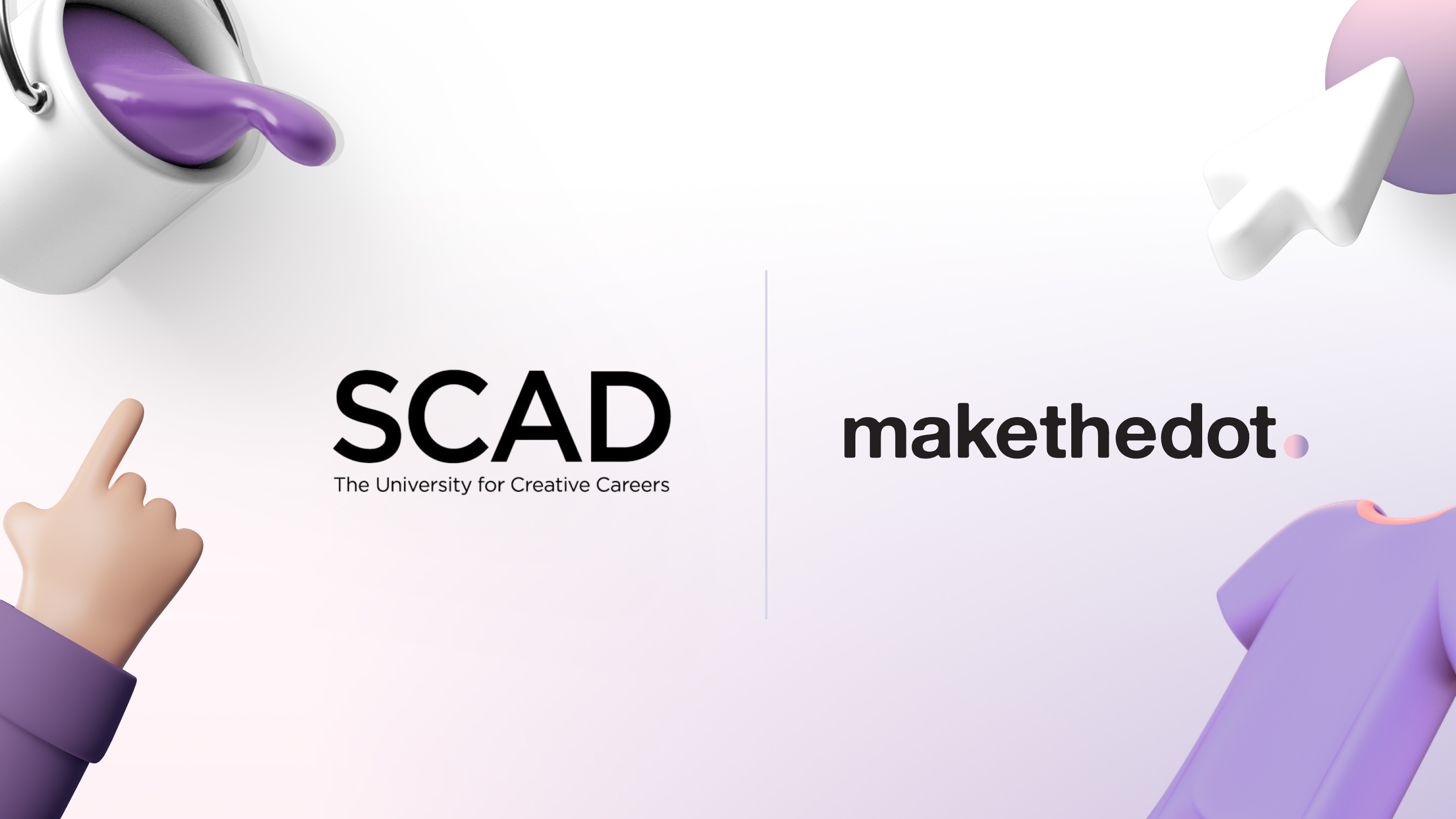How Make the Dot facilitated collaborative creation and concept experimentation for Academy of Art University
Academy of Art University, located in San Francisco, is recognized as one of the leading fashion schools in the US.
With over 1,000 students in its fashion department alone, the university is dedicated to equipping it's students with the necessary technical, workflow, and presentation skills to prepare them for a successful fashion career.

The Problem
Fragmented tools without standards like fabric swatches or color hue led to inefficiency and less concept experimentation
The final project for the Junior students in the FSH259 Pre-Production class was the culmination of years of research, ideation, and concept experimentation. The project required the students to tie various themes together and present them cohesively as a visual story, an essential component of their degree program.
The university evaluates students' technical abilities in flat sketching, 3D CAD software design, PLM, concept development, and pitching/presenting ideas, with the ability to analyze trends and turn them into an original concept essential.
However, this workflow utilized multiple fragmented tools, some of which needed to be explicitly created for fashion industry workflows, which they were not.
For example, the students often used non-industry sources for their concept development, such as Google images of fabric and color photos rather than actual fabric swatches or Pantone hues.
This visual research was inefficient, time-consuming, required multiple sources, and could not be used to create authentic garments or source fabrics.
Keeping track of images and content collected during visual research was challenging, as multiple tools sometimes caused duplicate work, such as downloading and re-uploading images.
Their concept development workflow was inefficient, resulting in less time spent on discussions and experimentation and potentially affecting the quality of the final project outcome.
The Solution
One location to research, refine, and develop design concepts aligned with fashion industry standards and workflows.
Due to fragmented and inefficient workflows and needing more technical visual research tools, the Academy of Art University implemented Make the Dot in its Fashion Product Development (BFA).
The students reported that the user-friendly nature of Make the Dot was its first benefit, along with the ability to use digitized fabric swatches and Pantone TCX colors from built-in libraries.
This new workflow significantly improved from the previous one that relied on separate internet research. The old process wasn't linked to industry color and fabric swatches that could be used to manufacture an apparel product or purchase a swatch to create a physical sample.
The browser extension allows designers to add research images directly to their board. It also aids students who would previously download and organize research to their computers.

Having one canvas to organize visual research and concept development increased workflow efficiency and gave students more time to experiment with creative concepts while providing one reference space.
Professor Andrea Skillings, who implemented Make the Dot shared a few thoughts on the project.
"The Pantone and Swatch section makes it easier, as students can access all the resources they need to create their concepts in one place and don't have to hunt in many different areas."
Being a virtual class, one of the most significant benefits reported was the collaborative nature of Make the Dot.
"I had a student in class who logged in all the time from China because she kept going back home, and it was great to feel like everyone was in the classroom, even though they weren't."
By using Make the Dot as a working file, the class could collaborate in real-time, give feedback, discuss concepts, or iterate on creative ideas, enabling students to promptly modify their working board, save time, and experiment with their concepts.
"I found the students are more willing to experiment in the board-making process. Many students would come to me and ask, "What do you think about these?" So from a collaborative creative process, it helped.
The Result
Improved final outputs and better grades, with better preparation for industry workflows and expectations
After the class concluded, Make the Dot was discussed with Professor Andrea to review feedback and usage.
The use of Make the Dot allowed students to save time and work collaboratively, resulting in a more collaborative creative process and more concept experiments.

In addition, their final work was presented digitally, improving their concept presentation by allowing for the collection, organization, and presentation of their entire concept in one digital space.
"Their final work is presented digitally, so the outcome is a digital component. Make the Dot was great for concept development, color research, trend research, and presenting that idea to the class."
With the students graded on concept development, grades generally improved by using Make the Dot.

Although workflow efficiency is undoubtedly essential, understanding the output from that efficiency and the link to an industry workflow is essential.
"In order to prepare our students for their professional careers, we always endeavor to use industry-relevant materials. While in a school setting, saving 3 hours may mean more time to socialize, in a work setting, it can make a huge difference because the workload is much greater. For instance, in a work environment, designers are expected to create 200 styles in 15 weeks, whereas in the classroom, they may only need to design 10 styles in 15 weeks. Therefore, it's advantageous if you can complete tasks quicker without compromising quality."
Thus, the ability for students to create an improved output in less time while preparing them for a fashion designer's workflow was a crucial outcome of the project.



